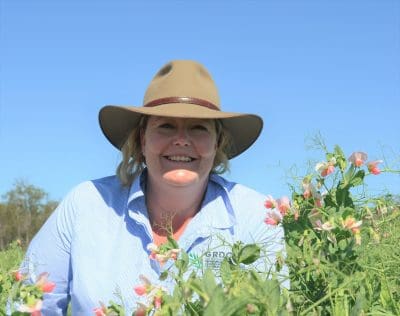Results from PREDICTA B DNA-based soil tests across northern NSW and southern Queensland so far this year suggest the risk of crown rot and root lesion nematode afflicting 2017 crops is similar to 2016, with 26 per cent and 49pc of paddocks recording medium to high risk levels respectively.

GRDC grower services manager – north, Sharon O’Keeffe, is urging growers to assess root lesion nematode (Pratylenchus neglectus and P. thornei) and crown rot risk prior to planting by using the PREDICTA B service.
The Grains Research and Development Corporation (GRDC) is urging growers to assess root lesion nematode (Pratylenchus neglectus and P. thornei) and crown rot risk prior to winter crop planting by using the PREDICTA B service to assist with crop and variety selection as well as paddock management.
GRDC grower services manager – north, Sharon O’Keeffe, said a baseline knowledge of pathogens in farming paddocks had an extremely valuable role to play in helping maximise crop yield potential, as well as in the long-term management and preservation of profitable farming systems.
“Most management decisions to reduce losses caused by soil- and stubble-borne diseases need to be made before the crop is sown,” Ms O’Keeffe said.
“The information generated through PREDICTA B testing on levels of individual pathogens like crown rot and root lesion nematodes enables advisors and growers to plan the cropping rotation to minimise risk of unexpected yield losses.”
The PREDICTA B testing service is offered through the South Australian Research and Development Institute (SARDI) and provides an indicator of root lesion nematode populations and crown rot risk.
Such information is useful prior to planting to establish the level of disease risk crops are exposed to and if alternative crop types or varieties should be grown.
Importantly, for results to be accurate, PREDICTA B requires a dedicated sampling strategy and is not a simple add on to a soil test.
Sampling recommendations for northern-based growers are:
- Collect two cores of one centimetre diameter and 15cm deep from each of 15 different locations within the target paddock or production zone.
- Samples may be taken to a 30cm depth if growers are concerned about Pratylenchus thornei detection.
- If using a larger diameter core or coring to 30cm, take fewer cores per location.
- Take soil cores from along/in the rows of the previous cereal crop if still visible and retain any stubble collected by the core. Most soil-borne pathogens are concentrated under the rows of the last cereal crop.
- If the rows cannot be seen, take the cores at random.
- Add two pieces of cereal stubble, if present, to the sample bag at each of the 15 sampling locations to improve the detection of crown rot.
- Each piece should be a single dominant tiller from the base of different plants and include the crown to the first node. Discard material from above the first node.
- Maximum sample weight should not exceed 500 grams.
Sampling for a PREDICTA® B test can be arranged by contacting commercial testing service, Crown Analytical Services, which provides northern growers and advisors with bags, soil corers, protocols and procedures for sampling as well as an interpretation of results once tests are completed.
To organise sampling kits, or for more information on the PREDICTA B tests visit the SARDI website www.pir.sa.gov.au or contact Crown Analytical Services on 0437 996 678.
Source: GRDC



HAVE YOUR SAY